As a Metro-North rider, and an appreciator of art, I must say that I have a strong affinity for the Arts for Transit program. In fact, I found the many permanent artworks to be some of the most enjoyable things discovered while on my journeys to all 123 Metro-North stations. From the bronze chairs in Pleasantville, to the stained glass in Tarrytown, there is delightful art abound. But some of the most lovely work to come from the Arts for Transit program recently are not the permanent installations in our stations, but the designs inspired by Grand Central Terminal, a part of the year long centennial celebration called On Time / Grand Central at 100.
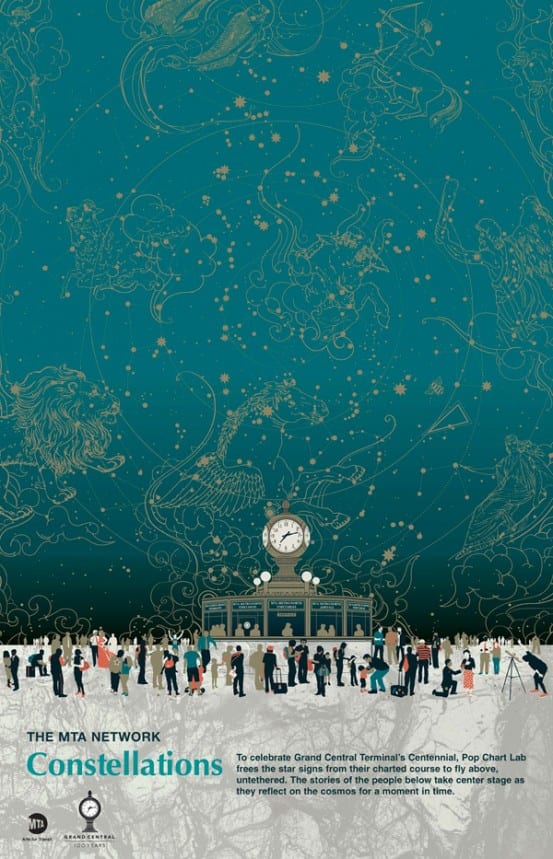
You may have seen this poster around… Pop Chart Lab brings the sky ceiling to life!
Arts for Transit, however, is not the first group to bring art into the Terminal. Long before the program was ever conceived, the Grand Central Art Galleries were established on the sixth floor of Grand Central. I was inspired to learn a little bit more about the galleries after purchasing an old New York Central dining car menu. The menu featured an example of the artwork one could find in the gallery, and the back contained a rather dated ad suggesting that businessmen take their wives on the trains and only pay half (which, if you are interested, I posted on the I Ride the Harlem Line facebook page).
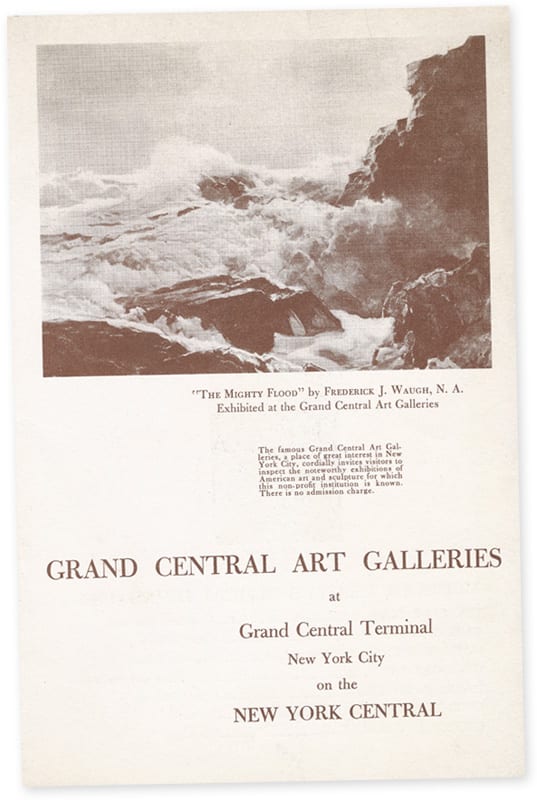
On a dining car menu, 1953 – Grand Central Art Galleries. ((Menu from the author’s collection.))
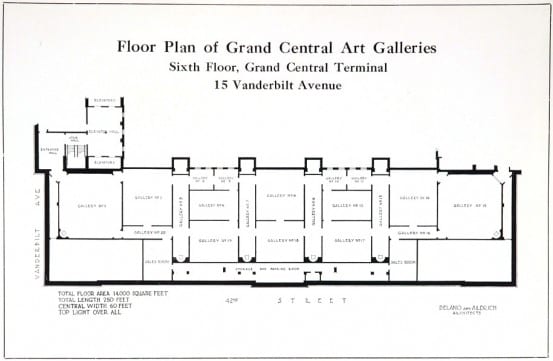
Floor plan of the Grand Central Galleries. ((Floor plan from the Frick Art Reference Library, via the New York Art Resources Consortium.))
The Grand Central Art Galleries were established in 1923, and remained in the Terminal until 1958, when they moved to the nearby Biltmore Hotel. Long established in our collective consciousness is the concept that a dead artist is worth more than a living one, but this gallery’s intent was to sell the artworks of the living. Both artists and non-artists paid a membership fee, providing artworks (1 a year, for 3 years) and cash ($600 when the galleries opened), respectively.
A wide variety of artists were associated with the Grand Central Art Galleries over its many years, including some well-known faces in the art world like John Singer Sargent. Featured on the menu above was a painting by Frederick Judd Waugh, whose art frequently depicted ocean scenes. He was also known for designing ship camouflage with the US Navy during World War I.
Today Grand Central’s upper floors are off-limits to the general public… but if you’d like to see how the 6th floor looked back in the late 1920s, here are a few photos!
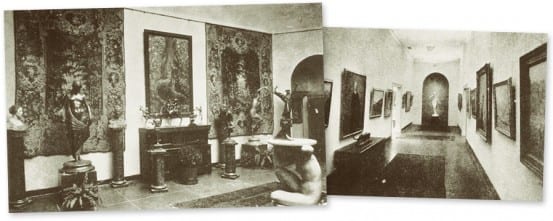
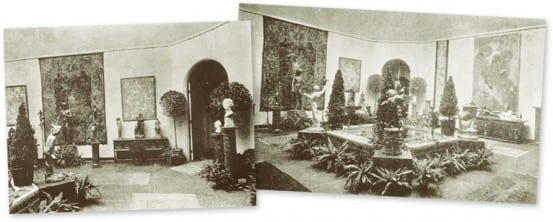
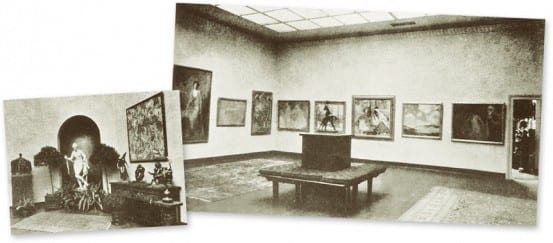
Photos of the Grand Central Galleries. ((All photos from the Frick Art Reference Library, via the New York Art Resources Consortium.))


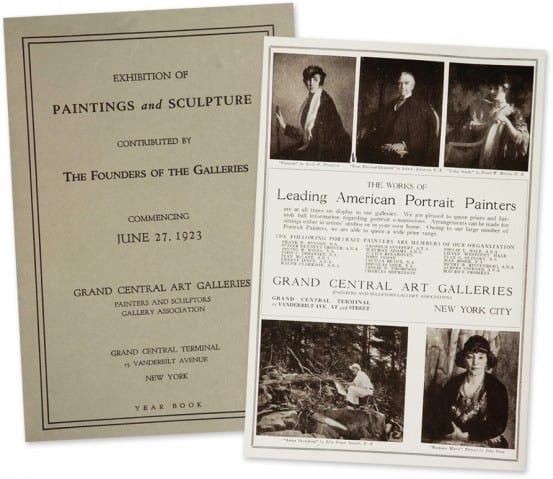
Was this the space later used as a CBS TV studio and later tennis courts?
Before we (Uris Buildings Corp.) tore down the old Grand Central Palace (Park & 46th/47th Streets) to build 245 Park, our Grand Central guru, Max Levine, discovered a painting left behind. Max was retired from the NYC as a civil engineer in the Terminal, or Chief Engineer’s office. He took the painting back to the Uris office. The brothers, Harold and Percy, told him to keep it. It turned out to be quite valuable — a Sargent, or some such. Max was my mentor and rabbi, for all thing sub-terrain in the ‘train rooms’ of GCT. Quite a guy!
Working in the train rooms of GCT, doing new construction, we paid for NYC “flagmen” to protect our work areas. Signing off on their time-sheets, I was surprised at how little they were paid. These guys were full Conductors and their pay was computed to the half-cent per hour, at a wage much lower that our laborers made. Most lived out of the city, as far north as Buchannan and Brewster. Only the lower housing costs, and an employee pass, made their lives possible.
Being the boss’ son (and later as the Field Boss, myself), I had a wunnerful chore each Xmas season. I got to, surrepticiously (sp?), deliver liquid “Greetings-of-the-Season” to NYCRR employees that had facilitated our endeavors. “Tokens-of-Appreciation” ranged from top-of-the-line Scotch, to Canadian whiskey, to (my favorite) rye, depending on the stature/pay grade of the employee. I’m sure none of them violated “Rule G” and took the presents straight home for the holidays. An occasional six-pack, for the flagmen, during the year, was also in my budget, but only at quitting time. Excuse me, now. I think I’ll have a drink.
I was riding a New Haven MU home to Rye, of an evening. As was my habit/wont, I rode the last car, sitting on the motorman’s fold-down seat. An obviously inebriated Trainman came onto the vestibule and ordered me out. He was carrying a paper bag with a six-pack in it. I said “Rule G” to him. He shut up and we rode merrily eastward. He didn’t share!